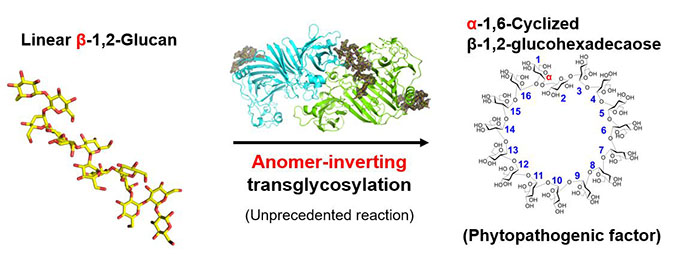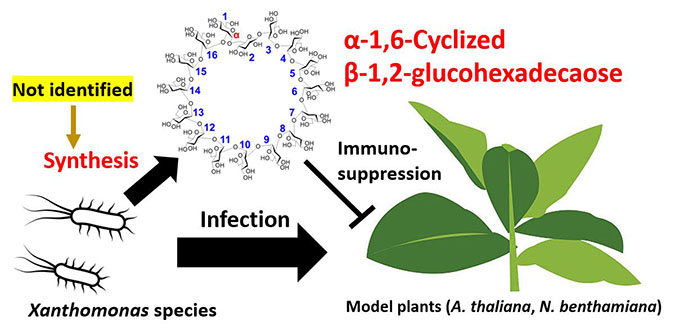
Adobe Stock
Researchers in Japan recently identified an enzyme that could lead to the development of eco-friendly pesticides to combat a genus of bacteria that causes harmful diseases in various agricultural crops and plants, including cannabis.
The enzyme, XccOpgD, plays a critical role in synthesizing a key compound used by Xanthomonas pathogens to enhance their ability to cause damage to plants, according to scientists at Tokyo University of Science—the largest science-specialized private research university in Japan. Their research was published June 19 in the Journal of the American Chemical Society.
Xanthomonas is a genus of pathogenic bacteria that causes diseases in more than 350 plant species, including leaf spot in cannabis, according to the research paper “Comparative genomics of a cannabis pathogen reveals insight into the evolution of pathogenicity in Xanthomonas,” published in Frontiers in Plant Science.
Xanthomonas species are also notorious for affecting essential agricultural crops like rice, wheat and tomatoes, according to the Tokyo scientists. These plant pathogens accelerate their ability to cause diseases by utilizing a compound known as CβG16α (α-1,6-cyclized β-1,2-glucohexadecaose) to suppress plant defense mechanisms. But XccOpgD, the enzyme identified by the team at Tokyo University of Science, plays a pivotal role in the biosynthesis of this CβG16α compound.
The team—which also included scientists from the Institute of Food Research, NARO, and Niigata University—conducted biochemical analyses to explain this role.
The scientists discovered that XccOpgD belongs to a novel enzyme family called glycoside hydrolase 186 (GH186), which is essential for regulating bacterial cell wall components. However, unlike previously identified GH186 enzymes, XccOpgD displays an unprecedented enzymatic mechanism known as anomer-inverting transglycosylation, according to the research team in Japan.

What does this mean?
Associate Professor Masahiro Nakajima from Tokyo University of Science, who led the research team, explained the significance of the anomer-inverting transglycosylation mechanism.
“Reactions of typical GH enzymes are classified into four types by combination of retaining or inverting, and reaction with water (hydrolysis) or sugar (transglycosylation) theoretically. However, one classification is missing somehow in a long history of [research] on carbohydrate-associated enzymes, and we discovered the missing classification,” he said in a July 31 news release. “This breakthrough was made possible by unique structural environment, opening new possibilities for enzyme-based glycosylation.”
This discovery paves the way for developing targeted, eco-friendly pesticides that could protect crops from Xanthomonas-induced plant diseases without harming beneficial organisms, according to the research team.
“We are expecting a pesticide concept targeting this enzyme homolog in the future,” Nakajima said. “Unlike fungicides that promote the emergence of drug-resistant bacteria in soil, targeting this enzyme could potentially inhibit pathogenicity without causing sterilization. Enzyme homologs identified in this study may serve as promising structure-based drug targets, offering a potential solution to the issue of drug-resistant bacteria.”
The researchers hope their discovery of the XccOpgD enzyme and its role in CβG16α biosynthesis marks a breakthrough to enhance sustainable agriculture and global food security.
The research team also included Sei Motouchi from Tokyo University of Science, Principal Scientist Shiro Komba from NARO, and Hiroyuki Nakai from Niigata University.






